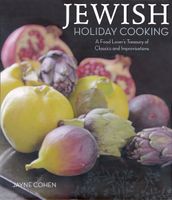Label
All
0
Clear all filters
🍜 Check out our Noodle bookshelf, and save 25% on ckbk Premium Membership 🍜
Shavuot
Appears in
By Jayne Cohen
Published 2008
“When a man comes down to his field and sees a ripe fig, or a perfect cluster of grapes, or a beautiful pomegranate, he ties each with a red thread, saying, ‘These are bikkurim, the first fruits for the Festival.’”
— Babylonian Talmud: Bikkurim, Chapter III
6 AND 7 SIVAN (MAY OR JUNE)
The symbols of Shavuot’s ancient agricultural origins are sweet with the perfumes of deep spring: soft-skinned fruits and sun-warm berries, decorative branches of fresh greens and fragrant flowers. One of the three pilgrimage festivals, the holiday began as a joyous harvest celebration. Seven weeks after Passover (“Shavuot” means weeks, and the festival is sometimes known as the Feast of Weeks), the last of the barley harvest was ready to be gathered and the first fruits and new spring wheat were beginning to ripen. Together these comprised the Seven Species, the choice crops mentioned in Deuteronomy with which the ancientland was blessed: in addition to barley and wheat, dates, figs, grapes, olives, and pomegranates.
In this section
Advertisement
Advertisement
The licensor does not allow printing of this title


